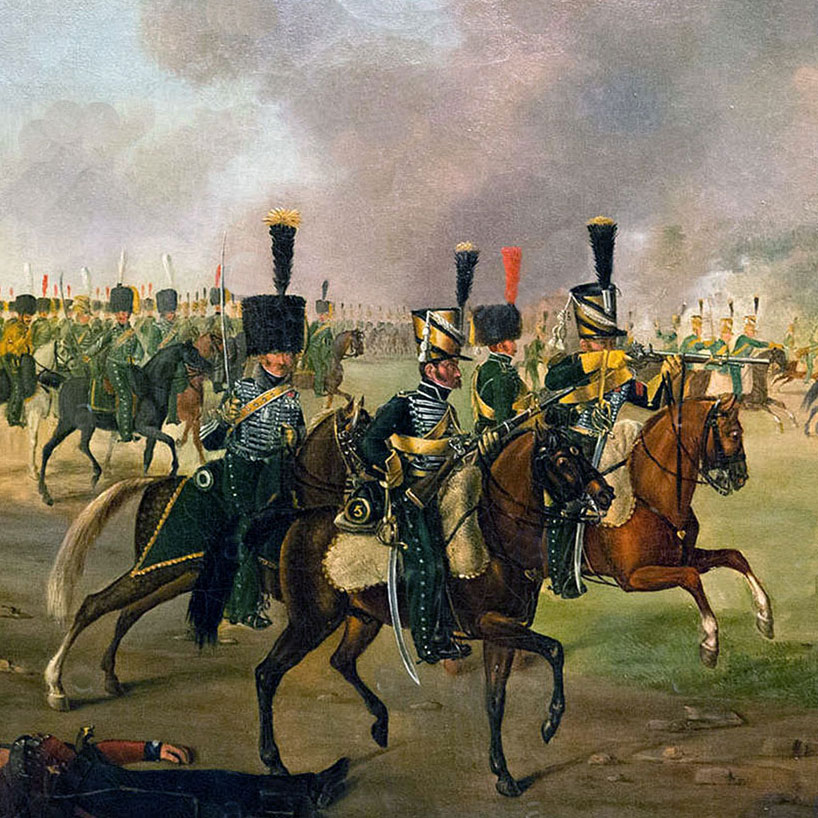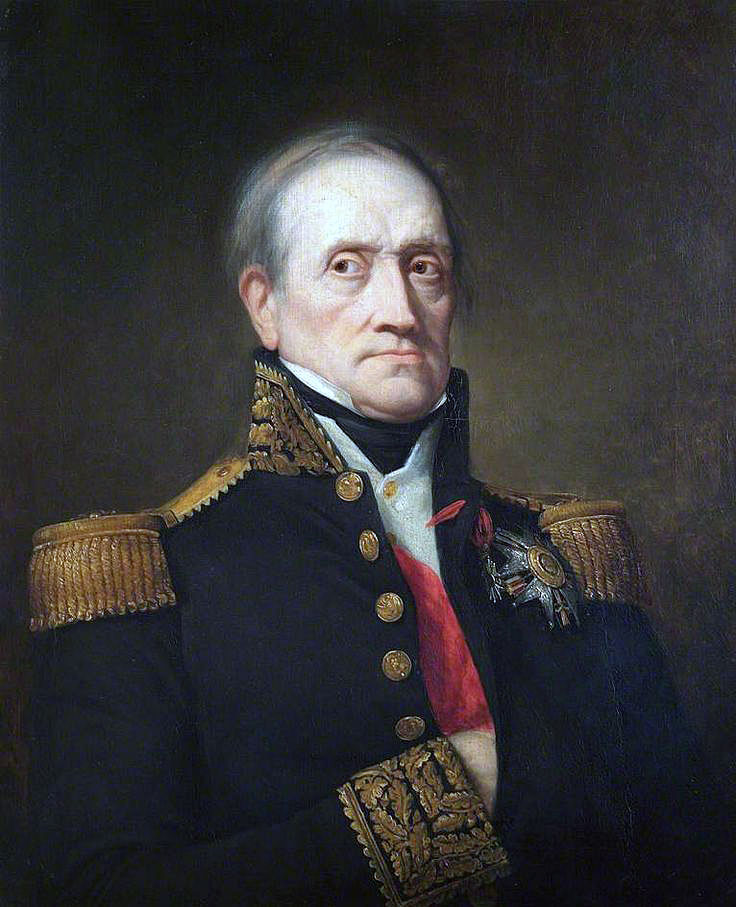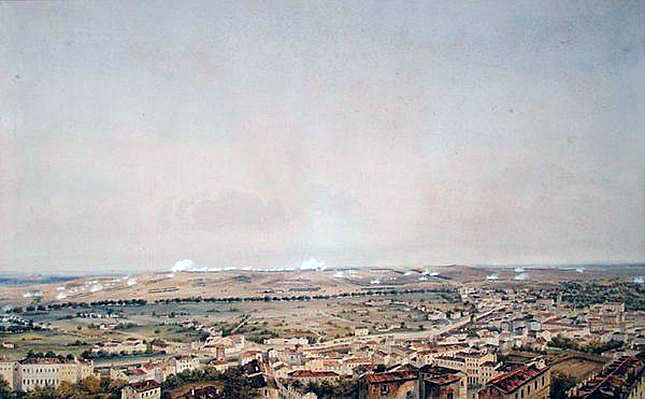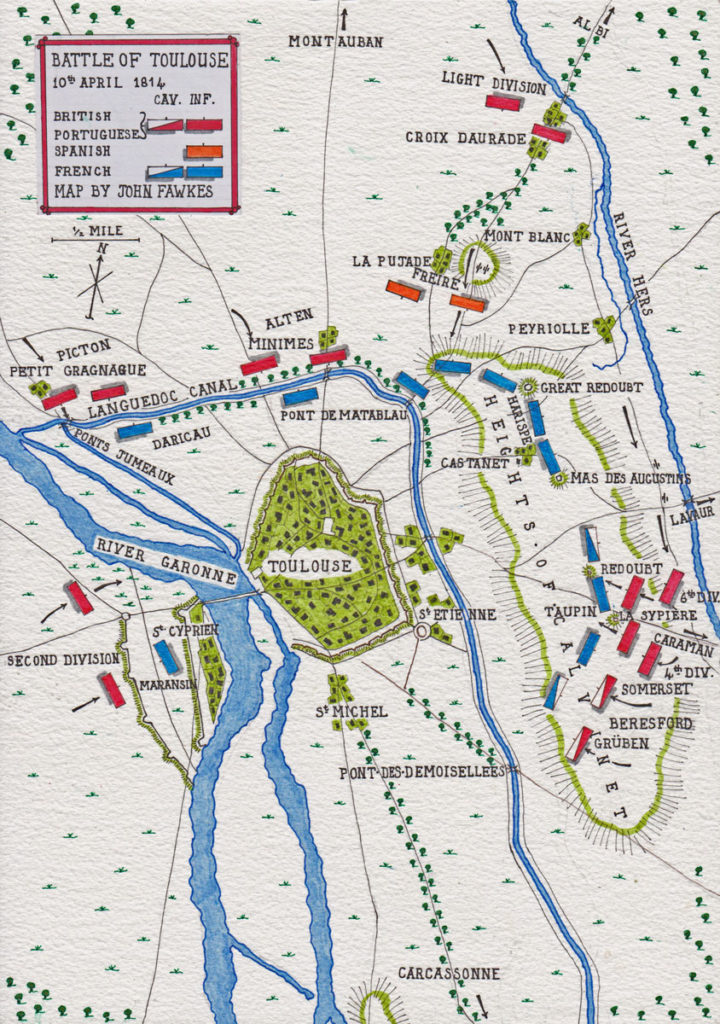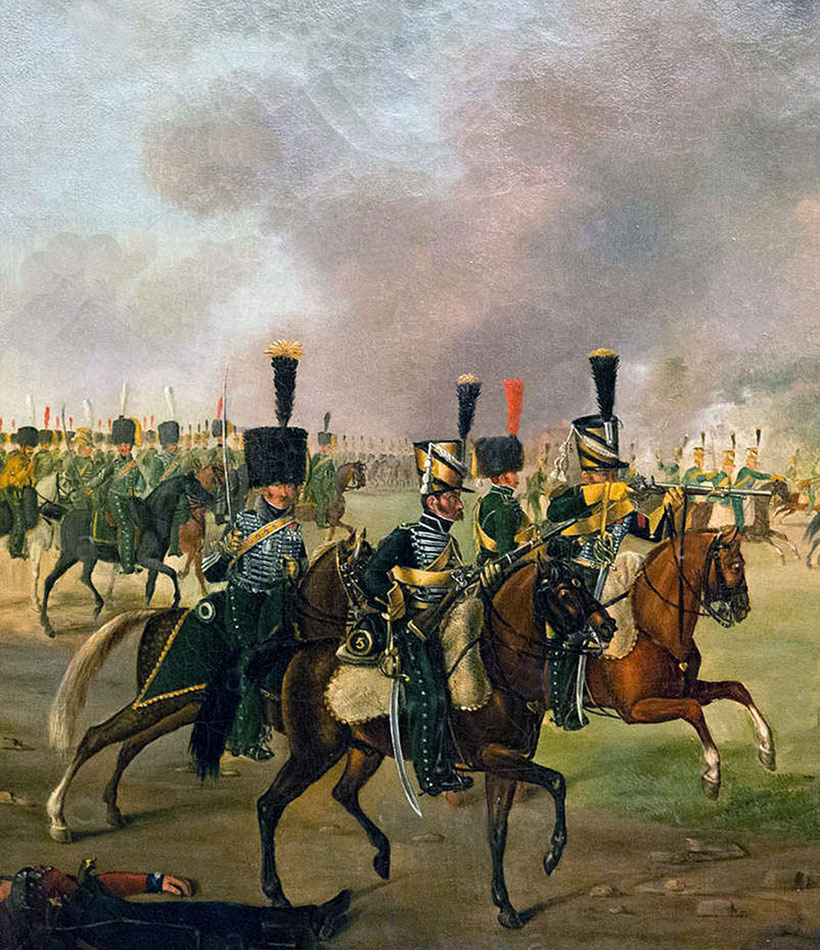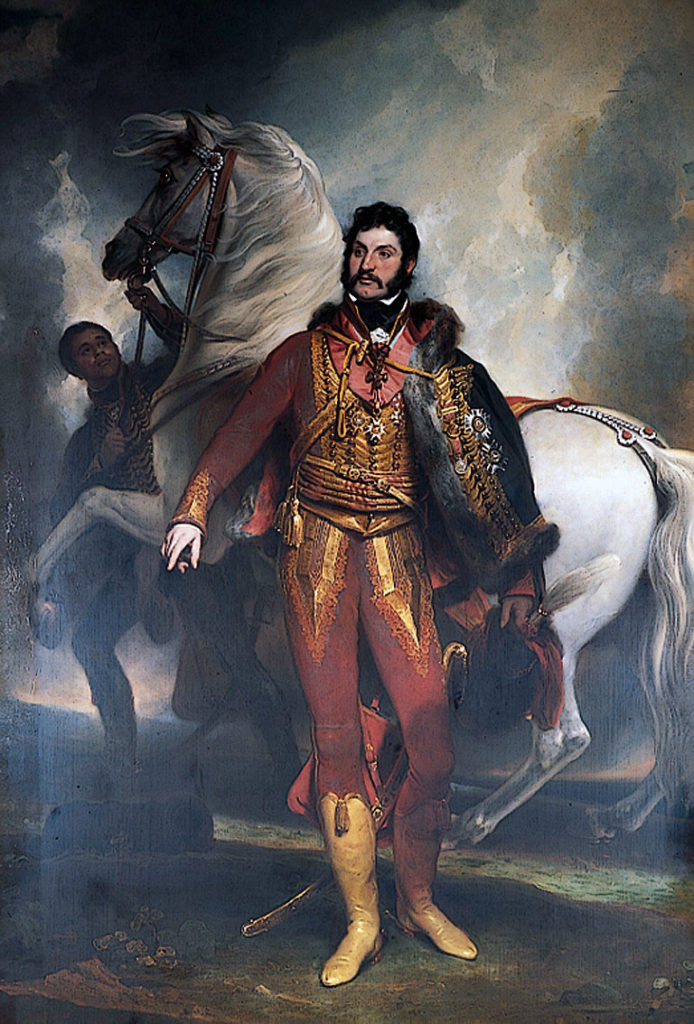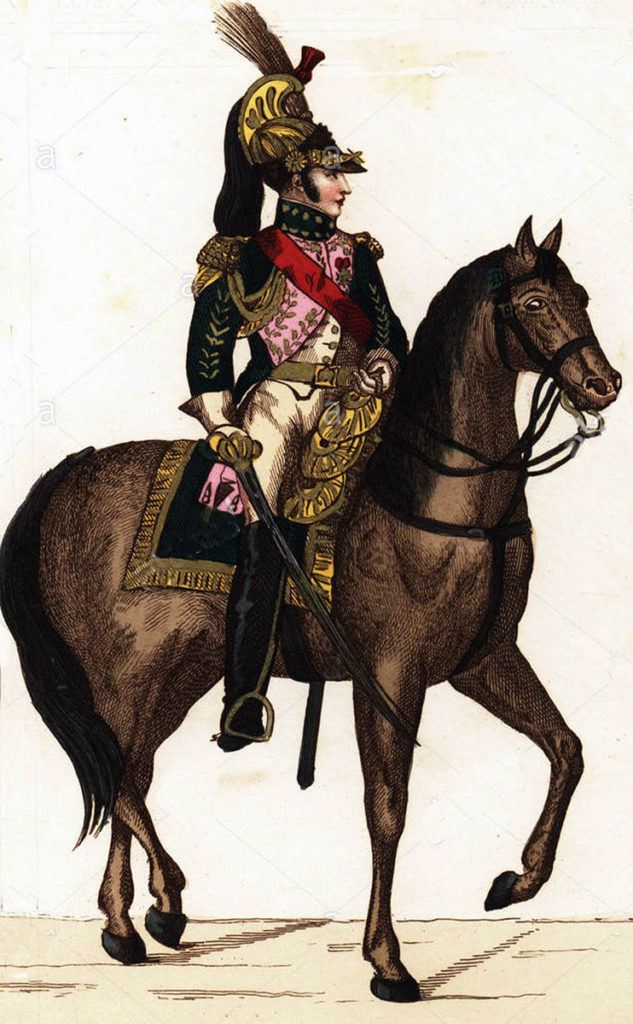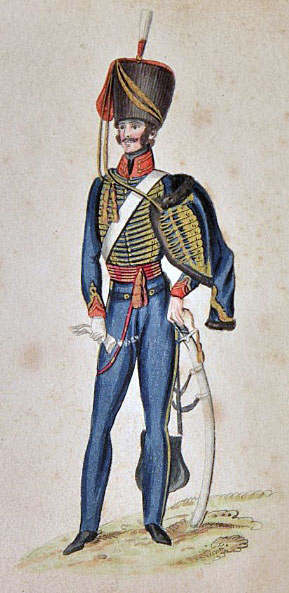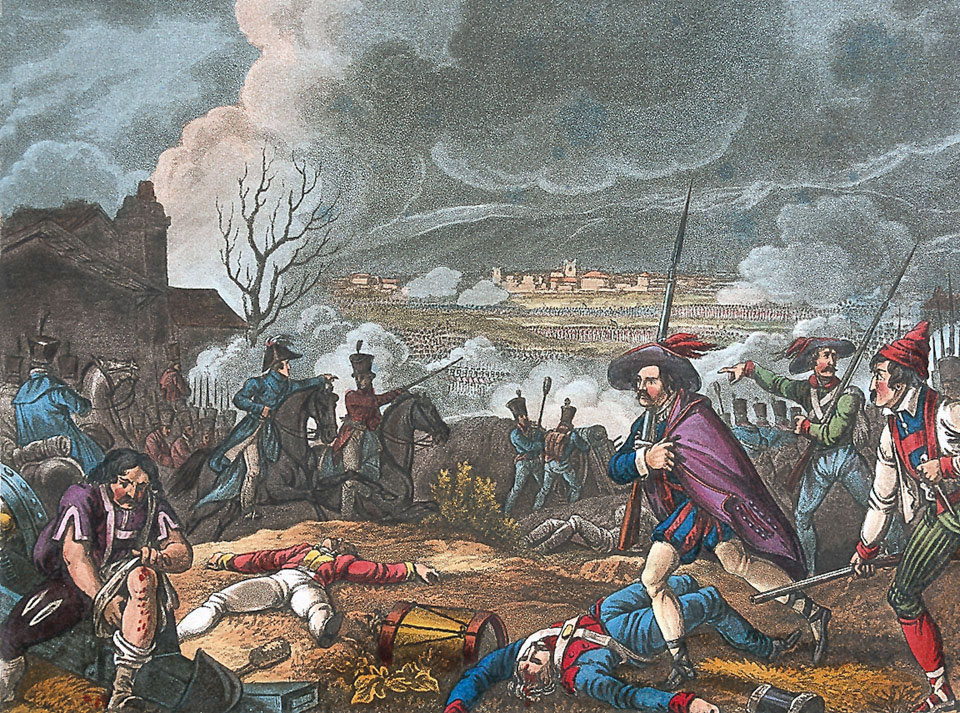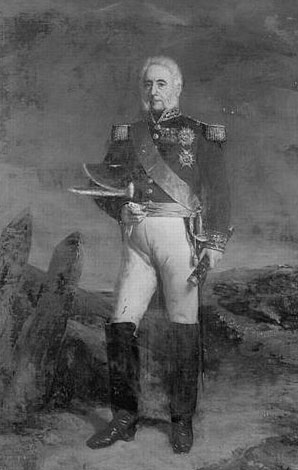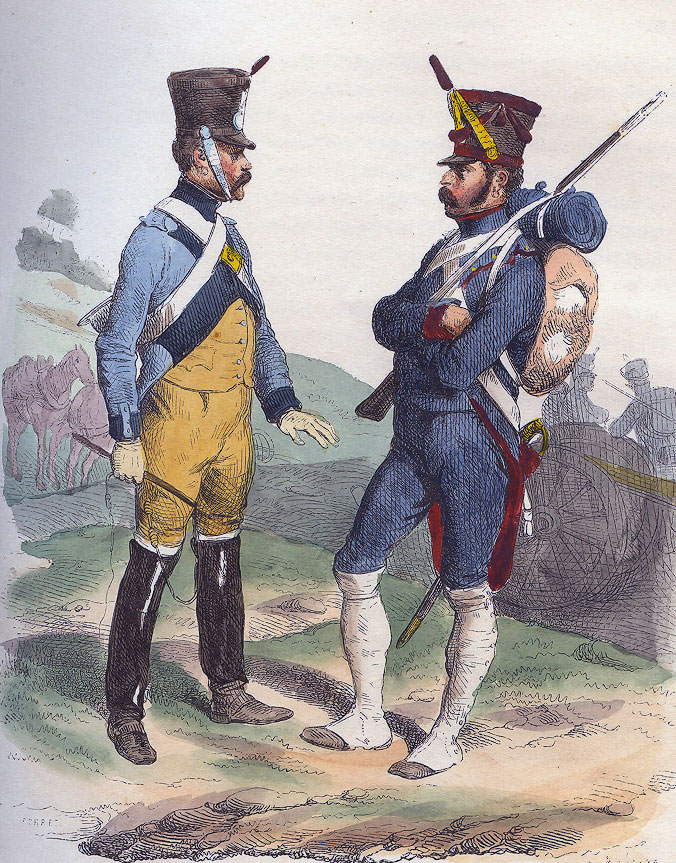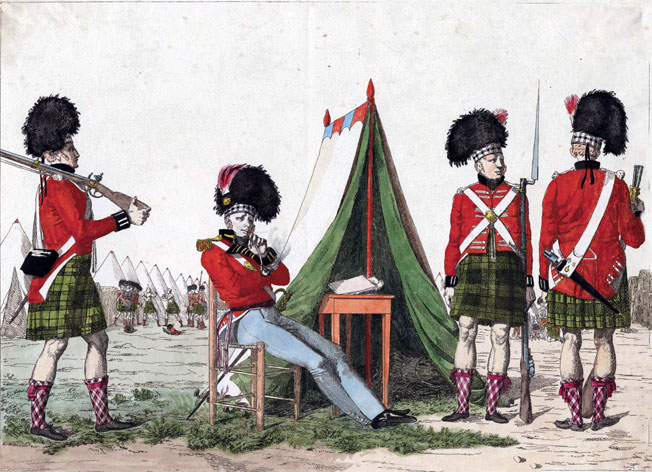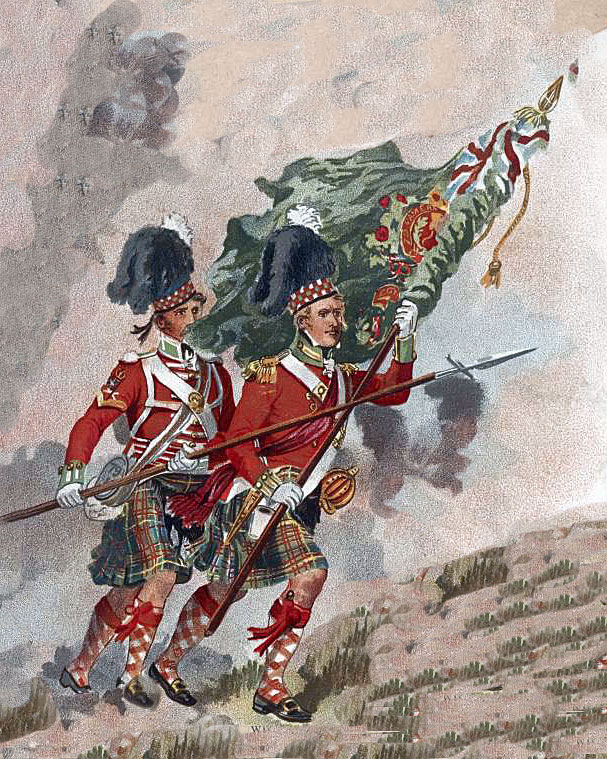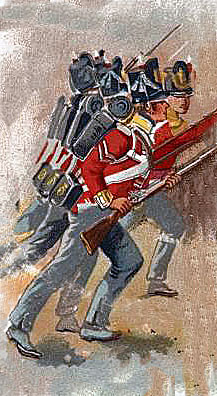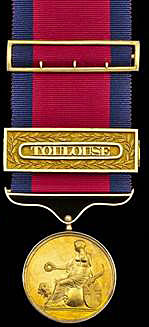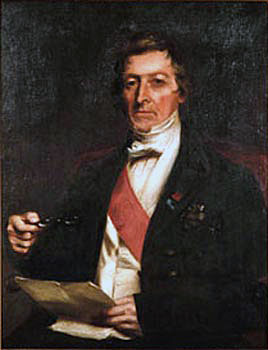The Battle fought by Wellington against Marshal Soult on 10th April 1814 outside the French City of Toulouse in Southern France; the last battle fought by Wellington in the Peninsular War
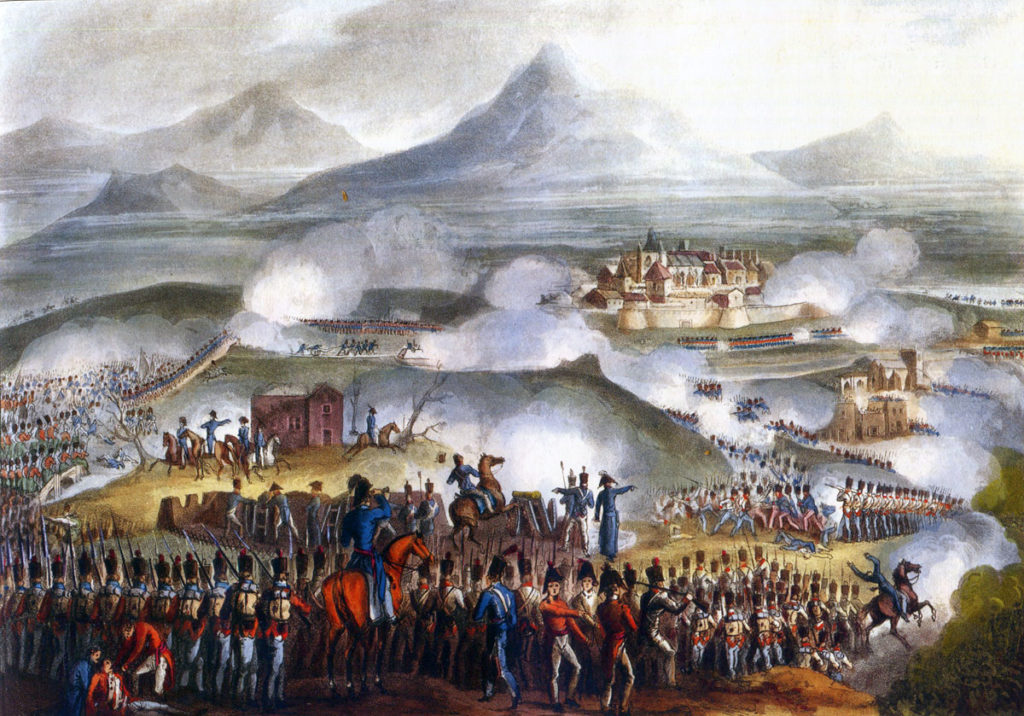
50. Podcast on the Battle of Toulouse fought on 10th April 1814 by Wellington against Marshal Soult outside the French City of Toulouse in Southern France; the last battle fought by Wellington in the Peninsular War: John Mackenzie’s britishbattles.com podcasts
The previous battle of the Peninsular War is the Battle of Tarbes
The next battle of the Peninsular War is the Sortie from Bayonne
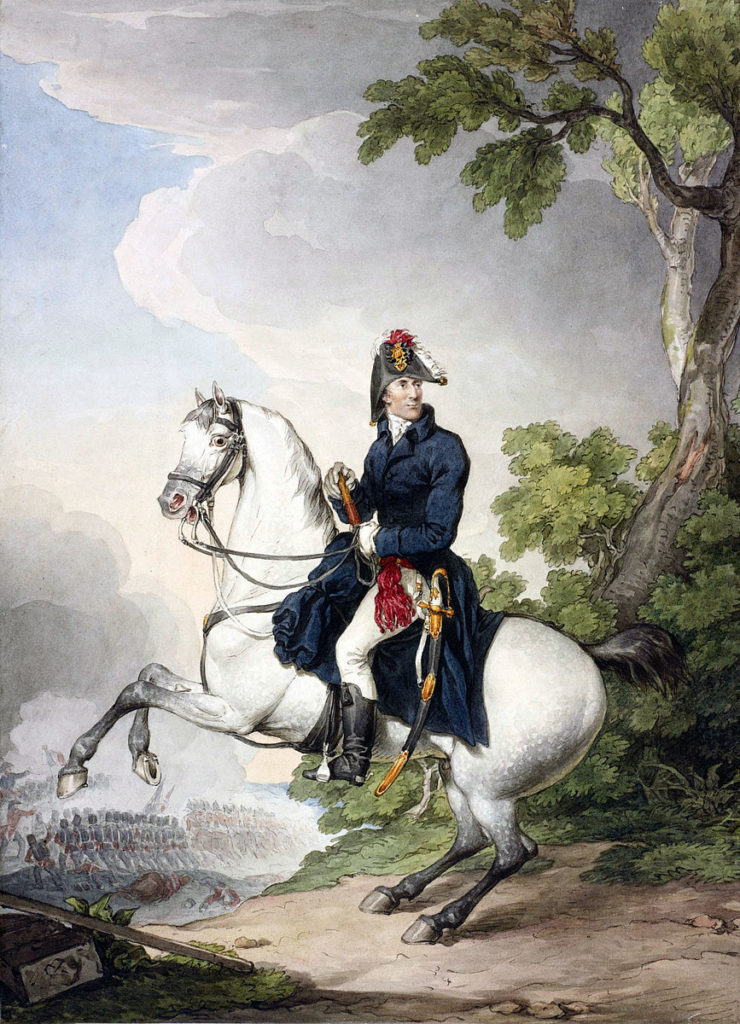
War: Peninsular War
Date of the Battle of Toulouse: 10th April 1814
Place of the Battle of Toulouse: Toulouse in South-Western France.
Combatants at the Battle of Toulouse: British, Portuguese and Spanish troops against the French.
Commanders at the Battle of Toulouse: Marquess of Wellington against the French commander, Marshal Soult.
Size of the armies at the Battle of Toulouse:
Soult’s French Army of the Peninsular comprised 25,000 infantry, 1,000 cavalry and 38 guns.
The force available to Wellington in the advance on Toulouse comprised 50,000 men.
Winner of the Battle of Toulouse:
The battle ended with Marshal Soult marching his army out of Toulouse, to join the army of Marshal Suchet at Carcassonne.
Fortescue commented: ‘…. It may freely be confessed that this was the most unsatisfactory action that Wellington ever fought, and the worst managed’.
Orders of Battle:
British, Portuguese and Spanish:
Fane’s Brigade: 13th and 14th Light Dragoons.
Ponsonby’s Brigade: 5th Dragoon Guards and 3rd and 4th Dragoons.
Arentschild’s Brigade: 1st and 2nd Dragoons, King’s German Legion.
Somerset’s Hussar Brigade: 7th, 10th and 15th Hussars.
Vivian’s Brigade: 18th Hussars and 1st Hussars, King’s German Legion.
Second Division (Hill): Barnes’ Brigade: 1st/50th, 1st/71st, 1st/92nd, 1 Co 5th/60th. Byng’s Brigade: 1st/3rd, 1st/57th, Prov Bn 2nd/31st & 1st/66th, 1 Co 5th/60th. Pringle’s Brigade: 1st/28th, 2nd/34th, 1st/39th, 1 Co 5th/60th. Harding’s Brigade: Portuguese 6th, 18th Line, 6th Caçadores.
Third Division (Picton): Brisbane’s Brigade: 1st/45th, 74th, 1st/88th, 4 Cos 5th/60th. Keane’s Brigade: 1st/5th, 2nd/83rd, 2nd/87th, 94th. Power’s Brigade: Portuguese 9th, 12th Line, 11th Caçadores.
Fourth Division (Cole): Anson’s Brigade: 3rd/27th, 1st/40th, 1st/48th, Prov Bn of 2nd Queen’s, 2nd/53rd. 1 Co Brunswick-Oels. Vasconcellos’ Brigade: Portuguese 11th, 23rd Line, 7th Caçadores.
Sixth Division (Clinton): Pack’s Brigade: 1st/42nd, 1st/79th, 1st/91st, 1 Co 5th/60th. Lambert’s Brigade: 1st/32nd, 1st/36th, 1st/61st. Douglas’s Brigade: Portuguese 8th, 12th Line, 9th Caçadores.
Light Division (Alten): Kempt’s Brigade: 1st/43rd, 1st/95th, 3rd/95th. Colborne’s Brigade: 1st/52nd, 2nd/95th. Portuguese 17th Line, 1st, 3rd Caçadores.
Spanish Division (Freire)
Morillo’s Spanish Brigade
French:
Corps: Reille’s, D’Erlon’s and Clausel’s.
Divisions: Pierre Soult’s Dragoons, Maransin’s Division, Darmagnac’s Division, Harispe’s Division, Taupin’s Division, Vilatte’s Division, Darricau’s Division and Travot’s Reserve Division:
Background to the Battle of Toulouse:
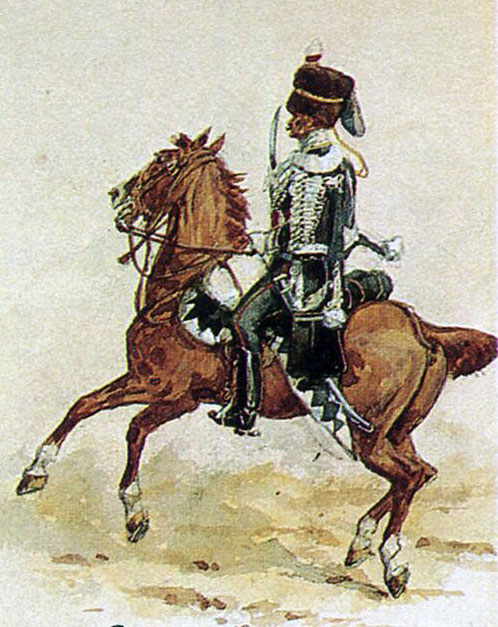
Following the defeat of his Army of the Pyrenees at the Battles of Orthez on 2nd February 1814 and at Tarbes on 20th March 1814, Marshal Soult retreated in a north-easterly direction on the city of Toulouse.
Soult took the road through St. Gaudens, sacrificing order for speed.
Marching north along the left bank of the River Garonne from St. Gaudens, Soult’s army reached Toulouse on 23rd March 1814. Discipline in the French army was breaking down and many of the French infantry were without shoes.
On 26th March 1814, Wellington’s British, Spanish and Portuguese army reached Toulouse, causing the French to withdraw inside the city’s fortifications.
Clausel’s 2 divisions occupied the eastern suburb of St Etienne.
Pierre Soult’s cavalry division crossed the Garonne River and took up positions along the right bank for 15 miles.
Reille’s Corps of 2 divisions occupied the suburb of St. Cyprien on the left bank.
D’Erlon’s corps remained outside the western defences, at a distance of around 2 miles.
On 27th March 1814, Wellington advanced and drove the French formations inside the defensive ring of Toulouse.
On that evening, the British pontoon train moved up to the River Garonne, but was unable to establish a bridge, there being insufficient pontoons for such a wide river.
On 28th March 1814, Wellington made new dispositions, with Hill’s Corps positioned to the south-west of Toulouse, preparatory to a further bridging attempt.
Soult appeared satisfied with remaining inside the city’s defences and from there repelling any attack Wellington might make, rather than taking the initiative.
On 30th and 31st March 1814, Hill’s Corps crossed the River Garonne at Pinsaguel, 5 miles upstream from Toulouse.
From the crossing, Hill marched to the east in an attempt to find a way across to the road to Toulouse from the south-east.
Hill was unable to find such a route and, on 1st April 1814, crossed back to the left bank of the River Garonne.
Soult made no effort to interfere with Hill’s march.
By 2nd April 1814, Soult was convinced that Wellington would cross the River Garonne to the north of Toulouse and launch his attack on the city from that direction.
Soult ordered entrenchments to be dug along the Heights of Calvinet, stretching down the eastern side of Toulouse, between the city and the River Hers.
In addition, Soult ordered the construction of an abatis along the road to Albi from the River Hers to the Mamelon de la Pujade.
Soult brought 6 of the divisions in St Cyprien across the River Garonne to hold the line that followed the Canal from the Garonne to the Matabiau Bridge and then to the River Hers on the Albi road.
1 division remained in St Cyprien to repel any assault by the British on that side of the Garonne.
Battle of Toulouse:
On the night of 4th April 1814, Wellington’s pontoon bridge was laid across the River Garonne at a point 12 miles north of Toulouse.
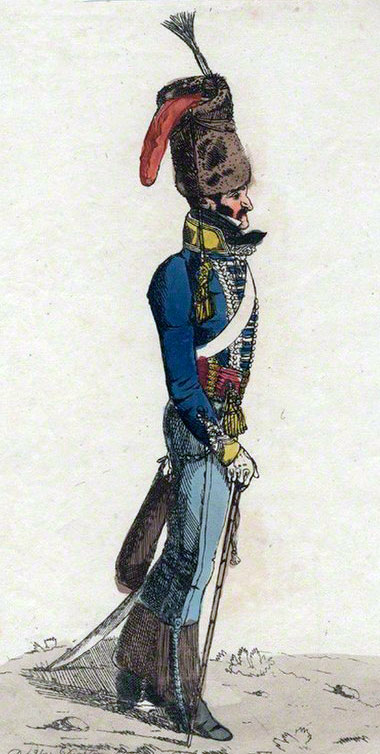
During 5th April 1814, the British Third, Fourth and Sixth Divisions of infantry with Somerset’s, Ponsonby’s and Vivian’s cavalry brigades and 3 batteries of artillery crossed by the pontoon bridge to the east bank of the River Garonne, preparatory to attacking the French positions along the canal.
By the evening, 20,000 men under Beresford were on the east bank of the River Garonne.
Rain fell heavily that night forcing the removal of the pontoon bridge, to prevent it being swept away.
The rain continued to fall heavily, with intermittent gaps, preventing the use of the pontoon bridge until 8th April 1814, when the pontoons were re-positioned across the river.
On 8th April 1814, Arentschild’s Cavalry Brigade and Freire’s Spanish Division crossed the River Garonne.
From there, Wellington’s troops advanced around the north of Toulouse, Picton’s Division and Freire’s Spanish Division turning directly towards the city, while Beresford’s Corps, comprising Clinton’s Sixth Division and Cole’s Fourth Division, marched south in 2 columns, between the Heights of Calvinet, occupied by the French garrison and the River Hers, their orders being to approach Toulouse from the south-east, once they had outflanked the French entrenchments on the Heights of Calvinet.
Wellington’s plan was to seize 3 bridges along the River Hers to facilitate the assault on the Heights of Calvinet.
Pierre Soult’s Dragoon Division retired before the cavalry on the eastern flank of the Sixth and Fourth Divisions, advancing south, parallel to the River Hers.
Vial’s French cavalry brigade halted on the eastern side of the bridge at Croix Daurade, on the Albi road, protecting the north-eastern flank of the defences stretching to La Pujade.
The action of the 18th Hussars:
The British 18th Hussars came up on the eastern flank of Wellington’s advancing columns.
The 18th drove the French cavalry piquets from the village of St Loup, 3 miles from the Croix Daurade bridge and across the River Hers.
This was other than the French 5th Chasseurs à Cheval, which moved onto a flank and opened carbine fire on the 18th.
Wellington and Beresford directed Colonel Hussey Vivian, commanding the cavalry brigade, to capture the bridge across the River Hers at Croix Daurade.
Hussey rode towards the bridge and was confronted by a mass of French cavalry on the far side of the river, moving forward unsupported by infantry or guns.
At this point Hussey was struck in the arm by a carbine round.
Hussey ordered the 18th Hussars to attack the French dragoons advancing on the bridge. He raised his sword arm to signal the charge, but the bone struck by the carbine bullet snapped and Hussey fell from his saddle in a faint.
Major Hughes led the 18th Hussars in the charge, meeting the French cavalry on the bridge.
The French were driven back and retired in disorder, pursued by the 18th, which took 120 French cavalrymen prisoners with their horses.
Pierre Soult, the general commanding the French dragoon division, was nearly captured.
The pursuit continued until the French dragoons were able to rally under the covering fire of their guns.
Wellington called out ‘Well done the Eighteenth; by God, well done’.
The 18th Hussars’ attack took place at 5pm and marked the end of the day’s action.
The British Fourth Division was now in possession of the bridge over the River Hers at Croix Daurade, while the French held the two bridges over the River Hers further south, on the road to Lavaur, level with the centre of Toulouse and on the road to Caraman, to the south-east of the city.
These other two bridges were either broken or prepared for destruction.
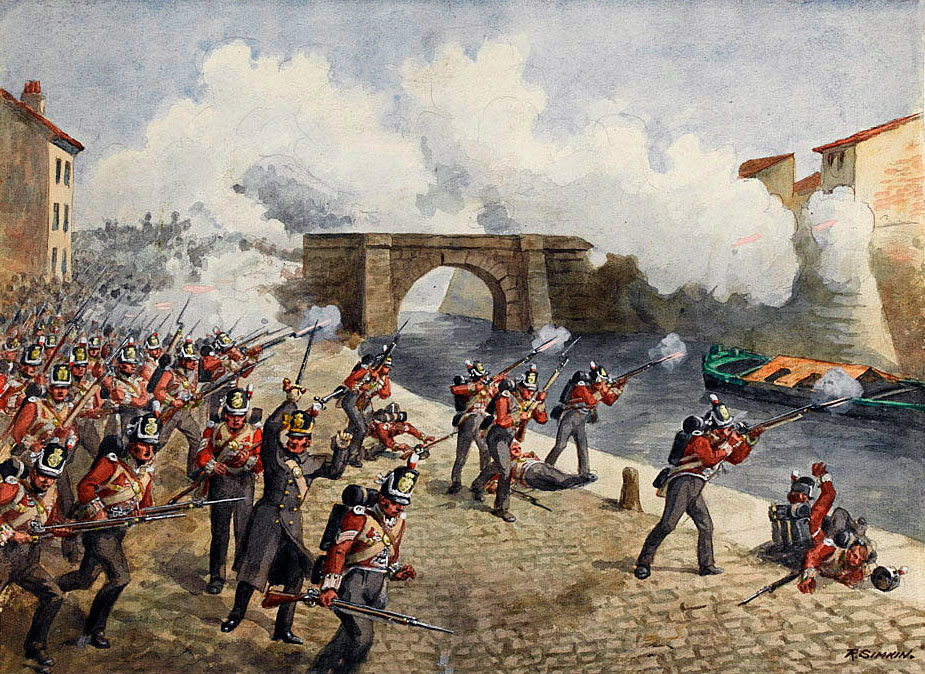
Wellington ordered that the assault on the Toulouse defences begin on the next day, 8th April 1814.
The pontoon bridge was to be moved 4 miles up-river to permit the Light Division to cross to the east bank of the River Garonne. This move was not completed in time and the attack was deferred to the 10th April 1814.
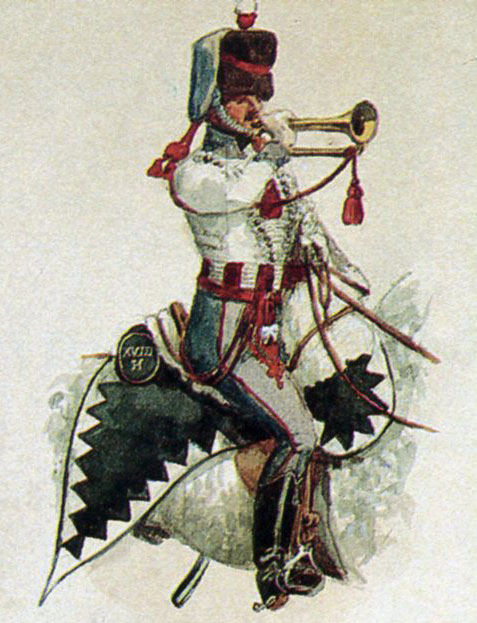
In the meantime, cavalry from Ponsonby’s and Vivian’s brigades were deployed in the rear, to guard against intervention by the French garrison in Montauban, 20 miles north of Toulouse.
The French positions around Toulouse:
Clausel commanded the French positions along the Heights of Calvinet, running along the city’s eastern side between the Languedoc Canal and the River Hers.
This was the scene for the main British attack.
D’Erlon’s Corps held the section of the Languedoc Canal running along the northern perimeter of Toulouse to the River Garonne; Darricau’s Division positioned along the canal bank with Darmagnac’s Division holding the area outside the Bridge of Matabiau at the right-hand end, where the canal turned south to run along the eastern side of the city.
Maransin’s Division from Reille’s Corps remained in St Cyprien, the suburb to the south-west of Toulouse, on the western bank of the River Garonne.
Taupin’s Division stood on the eastern bank of the River Garonne at the southern end of the Heights of Calvinet, in support of Clausel.
Travot’s reserve division was distributed at the north-eastern corner of the defences and along the River Garonne.
Wellington’s Attack on 10th April 1814:
Wellington planned for 2 attacks on the French positions around Toulouse.
The main attack was to be conducted by Beresford, with Cole’s Fourth Division, Clinton’s Sixth Division and the Hussar Brigade, against the south-east corner of the French defences.
This attack required an approach march down the length of the River Hers, parallel to the French positions on the Heights of Calvinet.
The second attack was allotted to Freire’s Spanish Division, advancing down the Albi road in columns on either side of the road.
Freire was required to halt in the village of La Pujade, until Beresford began his attack and then advance and storm the Great Redoubt positioned at the northern end of the Heights of Calvinet.
In support of these 2 assaults, Hill was to demonstrate against the suburb of St Cyprien on the western bank of the River Garonne and Picton and Alten were to conduct feint attacks along the line of the Languedoc Canal on the northern face of the defences.
Wellington’s attack began at 3am on Easter Sunday, 10th April 1814.
The Light Division crossed the River Garonne, while the other formations began their march towards the north-east corner of the defences.
Vivian’s Brigade of the 18th Hussars and the 1st Hussars of the KGL, commanded, in the absence of the wounded Vivian, by Major von Grüben, advanced aggressively down the east bank of the River Hers, pushing Berton’s dragoon brigade before them.
The French managed to destroy the bridge on the Lavaur Road, directly east of Toulouse, but, headed by Captain Schaumann’s squadron, the hussars crossed the bridge on the Reval road, well to the south-east of the Heights of Calvinet and chased the French cavalry as far as the Pont des Demoiselles, behind the right flank of the Calvinet positions.
By 8am, Vivian’s brigade was pressing in on the French defences.
Between 8am and 9am, Hill began his move against Maransin’s Division in St Cyprien, on the west bank of the River Garonne.
The battalion holding the northern point of the French line gave way and Hill was able to occupy its position and open cannon fire on the French troops holding the Jumeaux bridge on the far bank.
This success enabled Hill to push Maransin’s men back into the suburb, before halting.
On the east bank, opposite the northern line held by the French, Picton advanced and took a mansion house called le Petit Gragnague, in front of the Jumeaux bridges.
On Picton’s flank, Alten advanced against the bridge of Minimes, while his second brigade moved east to support Freire’s attack.
In front of the Spanish advance, Somerset’s cavalry brigade cleared Pierre Soult’s dragoons away, while Freire occupied the knoll of La Pujade, abandoned by St Pol’s Division.
Freire’s guns opened a cannonade on the French positions around the Great Redoubt, held by Vilatte’s Division.
Wellington himself took post on the knoll of La Pujade to follow the progress of his attack.
Beresford’s Corps, comprising Cole’s Fourth and Clinton’s Sixth Divisions, reached Croix Daurade, where a bridge crossed the River Hers, soon after 7am and began the hurried march south in 3 columns on the west bank of the River Hers, the infantry moving at the double.
The column on the right came under the direct fire of French cannon in the positions on the Heights of Calvinet,
The ground was difficult, due to the extensive heavy rain over the previous days and the British guns fell far behind, finally halting at Mont Blanc.
Soult, watching from the Heights, expected Beresford to wheel and storm the Heights of Calvinet.
As Beresford’s columns hurried on past the obvious point of attack, it became clear to Soult that Beresford was intending to march round his right flank.
Taupin was ordered to move his division from the northern end of the Heights of Calvinet to the Caraman Road, to block Beresford’s advance.
At around this time, 11am, Freire, who was under orders to await Beresford’s attack before beginning his own, lost patience and launched his own assault.
One Spanish column advanced down the Albi road, while the other, led by Freire, attacked the Great Redoubt on his left.
Freire’s men were met by heavy cannon fire from the bridge of Matabiau and the city walls, before spreading out to envelope the Great Redoubt.
At this point 2 French regiments from Darmagnac’s Division emerged from an area of gardens and mounted a counter-attack on both Spanish columns.
The Spanish, taken by surprise, fell back, their right-wing taking cover in a hollow road, which was raked by artillery fire from the guns on the city walls.
The Spanish resumed their retreat, in disorder, back to the village of La Pujade.
Wellington, observing the march of Taupin’s Division to the southern end of the Heights of Calvinet, sent orders to Beresford to wheel to his right and begin his attack directly on the Heights, as Soult initially expected.
However, Beresford, forming the view, as he marched south, that Wellington’s initial plan was entirely appropriate for the French dispositions, in spite of the move by Taupin’s Division, ignored this order and continued to march to the southern end of the Heights of Calvinet, after an initial deployment to his right in case the attack on Freire was the beginning of a counter attack along the whole French line.
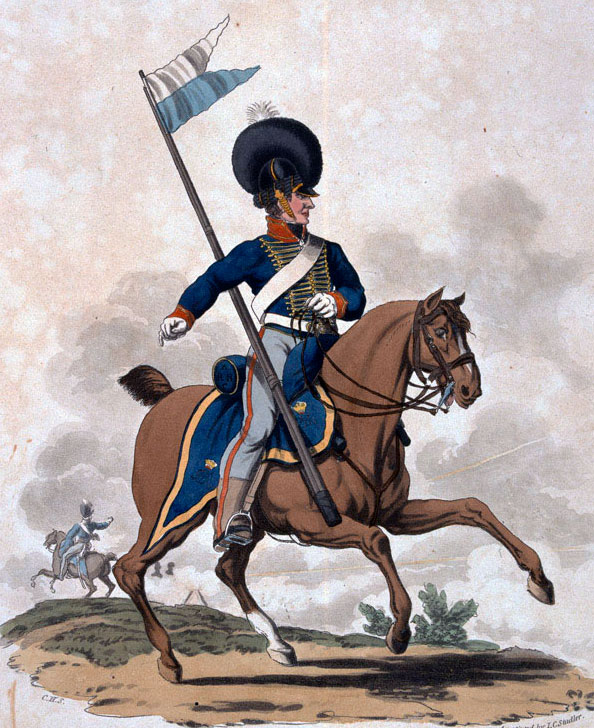
As the French did not stir from the Heights, Beresford soon resumed his march to the south.
For the next few hours, Wellington was concerned with halting the Spanish retreat and reforming the Spanish regiments.
Fortunately for Wellington, Soult made no attempt to follow up the French success in routing the imperfectly disciplined Spanish infantry.
However, Beresford was left to make his attack alone, without the benefit of being part of a double attack.
At around midday Beresford’s columns reached the Caraman road, wheeled to the right and deployed into three lines.
Pack’s Brigade and William Anson’s Brigade formed the first line. Lambert’s Brigade and Ross’s Brigade formed the second line. Douglas’s and Vasconcello’s Portuguese Brigades formed the third line.
The front of Beresford’s columns had outmarched the rest of the troops and it took some time for the rear formations to catch up and take their places in the lines.
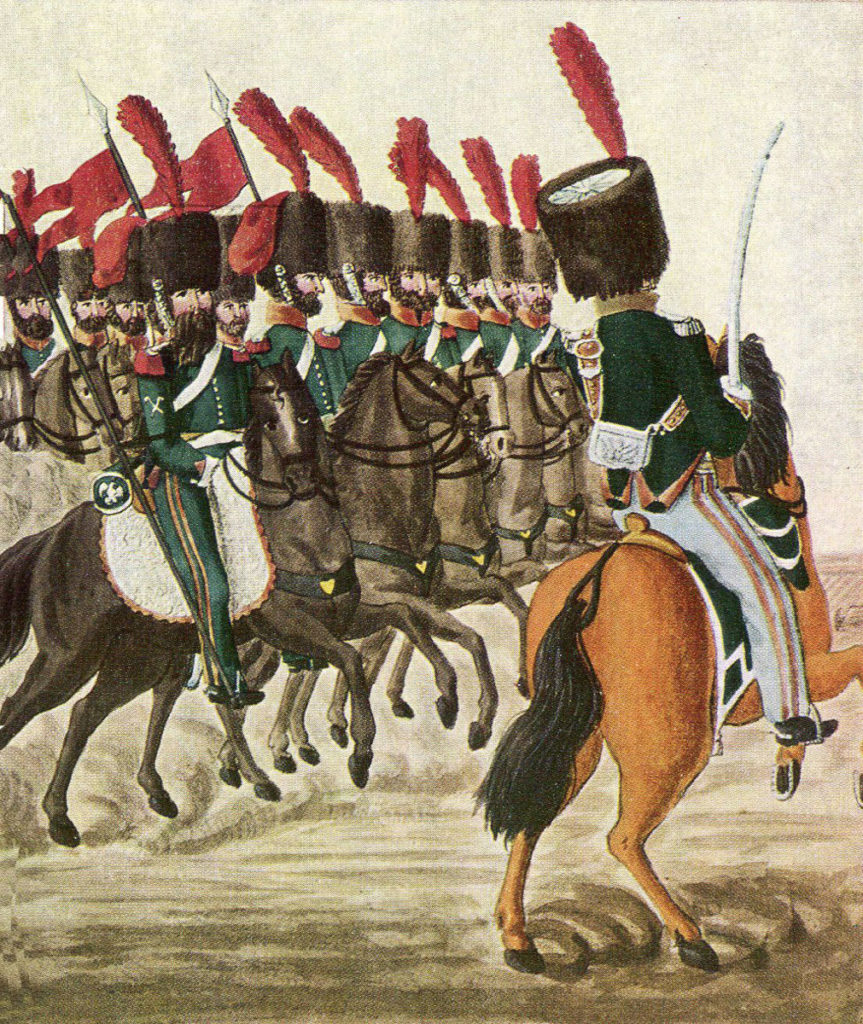
The French 21st Chasseurs à Cheval advanced to threaten Beresford’s unformed right flank.
The provisional battalion from Cole’s Fourth Division, comprising companies from the Queen’s 2nd Regiment and 2nd/53rd moved out to block the French cavalry.
Clinton’s Sixth Division came up and formed in line without pausing, enabling the whole of Beresford’s Corps to move forward to the attack.
The wet and muddy conditions prevented Beresford’s artillery from coming up and joining the advance, remaining at Mont Blanc.
In the hour before Beresford’s Corps arrived and formed line, Soult had been putting Taupin’s Division in a defensive posture, one brigade on each side of la Sypière Redoubt, Rey’s Brigade to the south and Gasquet’s Brigade to the north.
On the left flank, the 21st Chasseurs à Cheval were posted and on the right flank, 6 squadrons from Berton’s cavalry brigade with a battery of artillery.
The whole of the French line was positioned behind the brow of the hill.
As Beresford’s Corps came into view over the brow of the hill, Soult is reported as calling out ‘Here they are, General Taupin; I make you a present of them.’
Taupin took command of Rey’s Brigade and led it in the attack on Beresford’s forming left wing.
Once in front of the la Sypière Redoubt, Taupin halted his advance and gave the command to deploy.
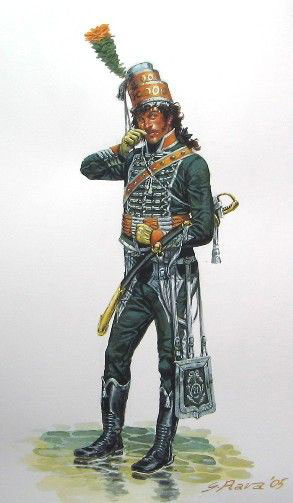
In answer a British rocket troop (a newly deployed weapon) fired a number of rockets into the French ranks, while Lambert’s and Anson’s Brigades opened a heavy fire on Rey’s men, in which Taupin fell, mortally wounded.
Rey’s Brigade retreated in confusion to the crest of the hill. The British 61st Regiment attacked la Sypière Redoubt, causing the battalion holding the redoubt to abandon its position.
On the left flank of Taupin’s Division, Gasquet’s Brigade fell back towards the suburb of St. Etienne, before the advance of the light companies from Clinton’s Sixth Division.
Attacks on the Sixth Division’s flank by the 21st Chasseurs à Cheval were held off by the 79th Highlanders in square.
On the edges of St Etienne, Taupin’s artillery joined the retreating infantry brigades and a new French line was formed, with Leseur’s Brigade from Darmagnac’s Division and Rouget’s Brigade from Maransin’s Division, along the east bank of the Languedoc Canal from St Etienne to the Pont des Demoiselles.
In spite of his success, Beresford, aware of the failure of the Spanish assault on the north-easterly defences, did not press his attack further, halting to await the arrival of his bogged-down guns.
Clinton’s Sixth Division halted on the Lavaur road, with Cole’s Fourth Division on its left, flanked by Somerset’s and Vivian’s cavalry brigades.
The firing died away and action ceased for a time.
Noting the lack of action, Picton, facing the Ponts Jumeaux from the Petit Gragnague, at the junction of the Languedoc Canal and the River Garonne, at the north-west corner of the defences of Toulouse, decided to convert his feint attack into a full assault on the French positions.
Brisbane’s Brigade, supported by Power’s Portuguese Brigade, attacked the French bridge-head at the Ponts Jumeaux.
Three times Picton’s troops pressed their attack, to be repelled with heavy casualties.
While Beresford’s and Picton’s attacks were taking place, Wellington was supervising the halt of the Spanish retreat and rallying and reforming the Spanish regiments.
Wellington then directed that his original plan of a co-ordinated attack by Beresford and Freire be re-launched.
There was some delay while the Portuguese guns on the knoll of La Pujade were re-stocked with ammunition and Beresford’s artillery came up the muddied road from Mont Blanc, before Freire’s men moved forward.
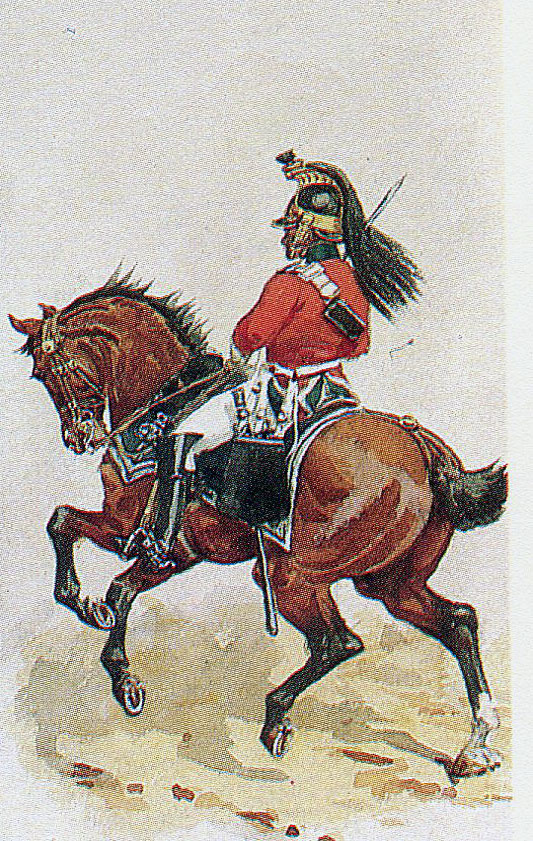
The Spanish attack was again unsuccessful, although pressed with energy.
Wellington refrained from committing the Light Division in support of the Spanish, as it was his last major unit and his only reserve.
Beresford’s attack from the Lavaur road on the French redoubts was led by the 42nd and the 79th Regiments, both Highland, supported by another Highland regiment, the 91st and the 12th Portuguese.
Commanded by Colonel Macara, later killed at Quatre Bras, who ordered ‘Forward, double quick’, the 42nd drove Harispe’s division out of the Mas des Augustins, the redoubt at the corner of the French position.
The 79th stormed the neighbouring Calvinet redoubt.
Harispe counter-attacked with the 115th, 34th and 81st Regiments and drove the 2 Highland regiments from their prizes.
The 79th rallied and returned to the attack, re-taking both redoubts.
The French again captured the redoubts, but were finally driven back once Lambert’s Brigade joined the assault, the French troops losing heart on the wounding of General Harispe and his deputy General Baurot, who was shot in the right leg, losing the leg to amputation.
Beresford’s guns arrived and opened fire on the Great Redoubt with considerable effect.
Beresford prepared for a further assault on the shrunken French line, when, at around 5pm, Soult ordered Vilatte to abandon the Great Redoubt and withdraw into St Etienne.
The position remained unchanged with Beresford dominating the Heights of Calvinet and the divisions of Darmagnac, Maransin and Taupin holding a line from Sacarin to the Pont des Demoiselles when nightfall brought the battle to a close.
No fighting took place on 11th April 1814, while Wellington brought up fresh supplies of ammunition and his cavalry probed to the south and east.
Casualties in the Battle of Toulouse:
French casualties in the Battle of Toulouse were 2,000 killed and wounded. The wounded were left in Toulouse when Soult marched south-east to Carcassonne.
British casualties were 1,850 killed and wounded. Spanish casualties were 1,800 killed and wounded. Portuguese casualties were 530 killed and wounded.
Clinton’s Sixth Division did most of the fighting in the attack at the southern end of the Heights of Calvinet. The Sixth Division suffered the preponderance of casualties in their attack and during the march south along the bank of the River Hers, when the division was the formation nearest to the French lines and suffered extensive artillery bombardment.
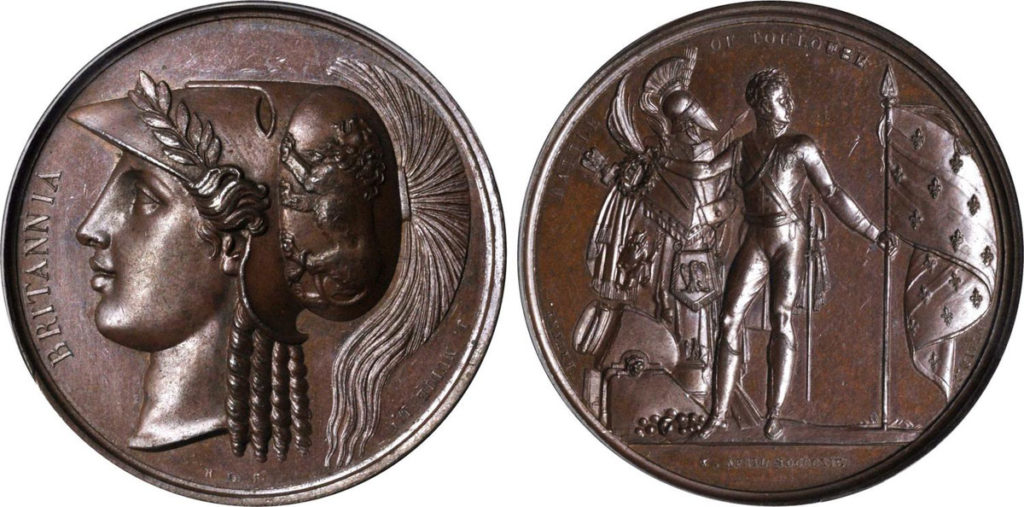
From Clinton’s Sixth Division, Colonel Coghlan of the 61st was killed. General Pack and Colonel Cuyler of the 11th and Colonels Douglas and Bermingham of the Portuguese army were wounded.
The 42nd Highlanders lost 26 officers and 386 soldiers killed and wounded.
The 79th Highlanders lost 18 officers and 215 soldiers killed and wounded out of a complement of under 500.
The 61st Regiment was brought out of action by the adjutant and 2 ensigns, all the more senior officers, except the adjutant, being killed or wounded.
From Picton’s Third Division: Colonel Forbes of the 45th was killed and General Brisbane wounded in the disastrous attack on the Ponts Jumeaux.
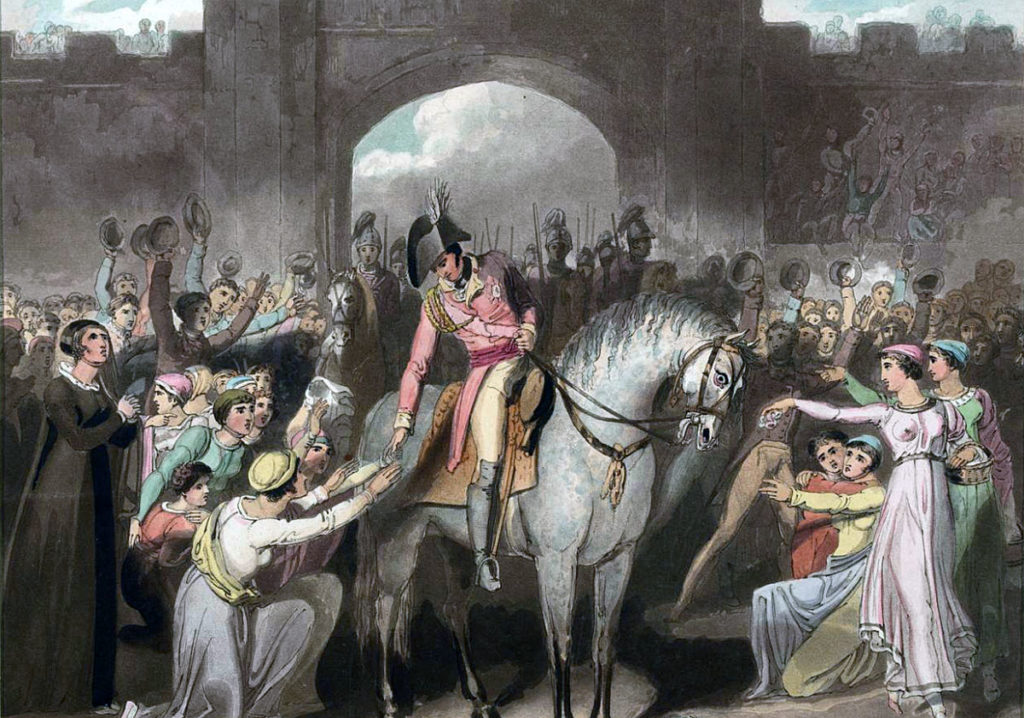
Aftermath to the Battle of Toulouse:
At nightfall on 11th April 1814, Soult’s army marched out of Toulouse, heading south-east towards Carcassonne, where Soult planned to join the army of Marshal Suchet.
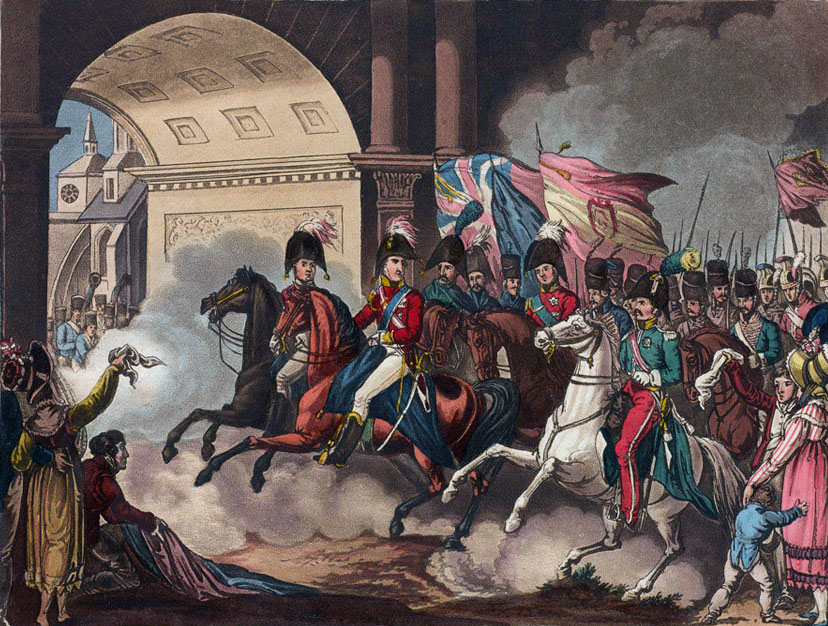
On 12th April 1814, while both sides moved towards Carcassonne, news arrived from Paris of the abdication of the Emperor Napoleon and the end of the war.
On 18th April 1814, Wellington and Soult signed an armistice and the fighting came to an end.
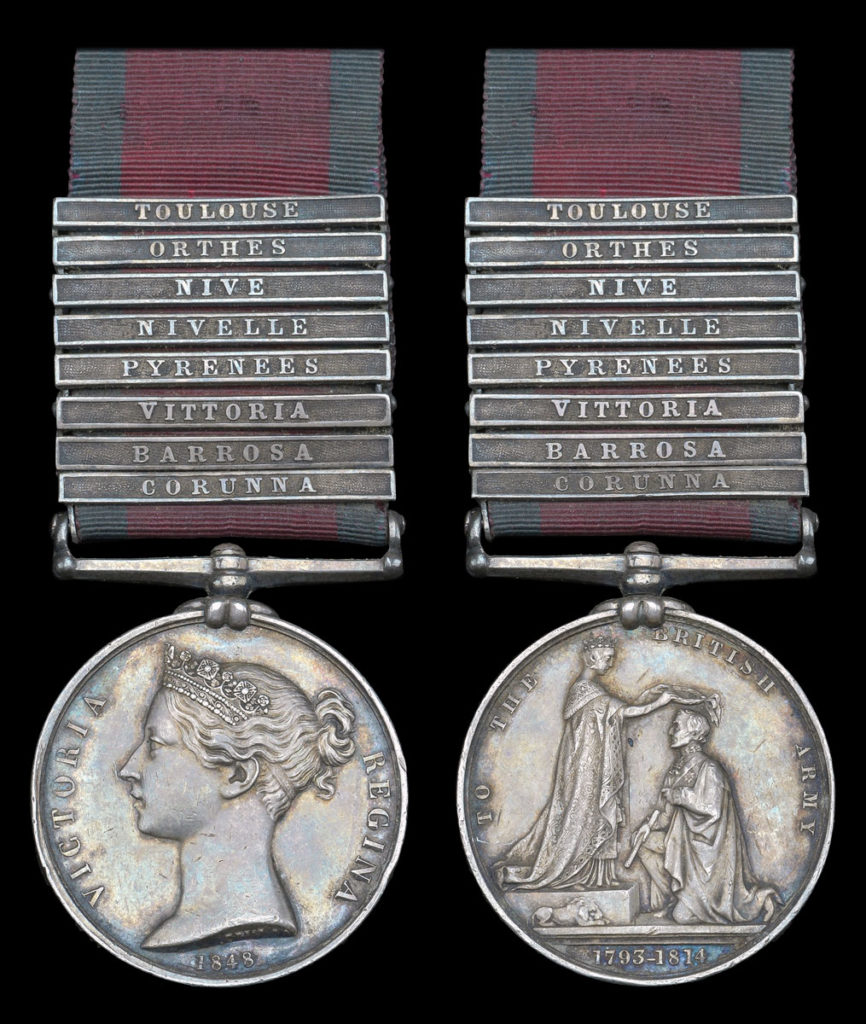
Battle Honours and Medal for the Battle of Toulouse:
The Military General Service Medal 1848 was issued to all those serving in the British Army present at specified battles during the period 1793 to 1840 who were still alive in 1847 and applied for the medal. The medal was only issued to those entitled to one or more of the clasps. There were 21 clasps available for service in the Peninsular War.
The Battle of Toulouse was one of those clasps.
Medals were also struck privately to commemorate the Battle of Toulouse.
Battle honours were awarded to regiments for taking part in certain important battles. The principal place for displaying a regiment’s battle honours is on the colours.
The Battle of Toulouse is a battle honour for the following British regiments: 5th Dragoon Guards, 3rd and 4th Dragoons, 13th Light Dragoons, 2nd Queen’s, 3rd Buffs, 5th, 7th Royal Fusiliers, 11th, 20th, 23rd Royal Welch Fusiliers, 27th, 28th, 36th, 40th, 42nd Black Watch, 43rd Light Infantry, 45th, 48th, 52nd Light Infantry, 53rd, 60th Rifles, 74th Highland Regiment, 79th Cameron Highlanders, 83rd, 87th, 88th Connaught Rangers, 91st Argyllshire Regiment, 94th and 95th Rifles.
The award of a battle honour seems not to have been governed by any particularly reliable benchmark. In some instances, regiments were not given a battle honour when they were present and suffered casualties. It is hard to see why the 18th Hussars were not given the battle honour of ‘Toulouse’.
Battle Honours and Medal for the Battle of Toulouse:
The Battle of Toulouse is a clasp on the 1848 Military General Service Medal and a battle honour for the following British regiments: 5th Dragoon Guards, 3rd and 4th Dragoons, 13th Light Dragoons, 2nd Queen’s, 3rd Buffs, 5th, 7th Royal Fusiliers, 11th, 20th, 23rd Royal Welch Fusiliers, 27th, 28th, 36th, 39th, 40th, 42nd Black Watch, 43rd Light Infantry, 45th, 48th, 52nd Light Infantry, 53rd, 60th Rifles, 74th Highland Regiment, 79th Cameron Highlanders, 83rd, 87th, 88th Connaught Rangers, 91st Argyllshire, 94th and 95th Rifles.
The award of a battle honour seems not to have been governed by any particular benchmark. In some instances, regiments were not given a battle honour when they were present and suffered casualties. It is hard to see why the 18th Hussars were not given the battle honour of ‘Toulouse’.
Army Gold Medal:
In 1810 a Gold Medal was issued to be awarded to officers of rank of major and above for meritorious service at certain battles in the Peninsular War, with clasps for additional battles. The ‘Large Gold Medal’ was awarded to generals, the ‘Small Gold Medal’ to majors and colonels, with the medal replaced by a cross where four clasps were earned. The Battle of Toulouse was one of the battles.
Anecdotes and traditions from the Battle of Toulouse:
- As the British cavalry, infantry and guns crossed the pontoon bridge over the River Garonne on 5th April 1814, the regimental bands played ‘The Fall of Paris’ to encourage the soldiers.
- While the pontoon bridge was in position on the River Garonne, downstream from Toulouse, the French sent trees and boats loaded with stones down the river, hoping to damage the pontoons. This was not achieved.
- The Battle of Toulouse was the first major battle at which the Royal Artillery used rockets in action, being fired at Taupin’s Division in the fighting over la Sypière redoubt. The rockets were fired by the Royal Artillery’s Mounted Rocket Corps, using rockets developed by Sir William Congreve from the weapons fired at the British during the Siege of Seringapatam in India in 1799 by Tipu Sultan’s army. Wellington heartily disliked the Congreve Rocket, considering it a waste of the Royal Artillery’s limited manpower resources, preferring guns. However, the British rocket was a much-feared weapon in Europe, credited with causing the Prussian and Russian Governments to bow to British pressure in the reconstitution of Europe.
- General John Brisbane, wounded leading his brigade in Picton’s rash attack on the Jumeaux bridges, later became governor of New South Wales in Australia. The town of Brisbane in Queensland is named after him.
- In the attack on the Mas des Augustins on the Heights of Calvinet the 42nd Black Watch were required by Colonel Macara to carry out an involved drill movement under the direct fire of French musketry and guns in order to bring the right wing of the regiment to the front before charging. The result was very heavy casualties to the regiment, causing one authority to comment ‘in this fight the 42nd (Royal Highlanders) was well-nigh annihilated’.
- In October and November 1814, Lieutenant Colonel George Quentin, who commanded the 10th Prince of Wales’s Own Hussars at the Battle of Toulouse, was tried by court martial in London on charges inspired by his own officers arising from his conduct at the battle and on other occasions. Quentin was largely acquitted and exonerated by the King. The officers who brought the accusations against Quentin were threatened with dismissal and moved to other regiments.
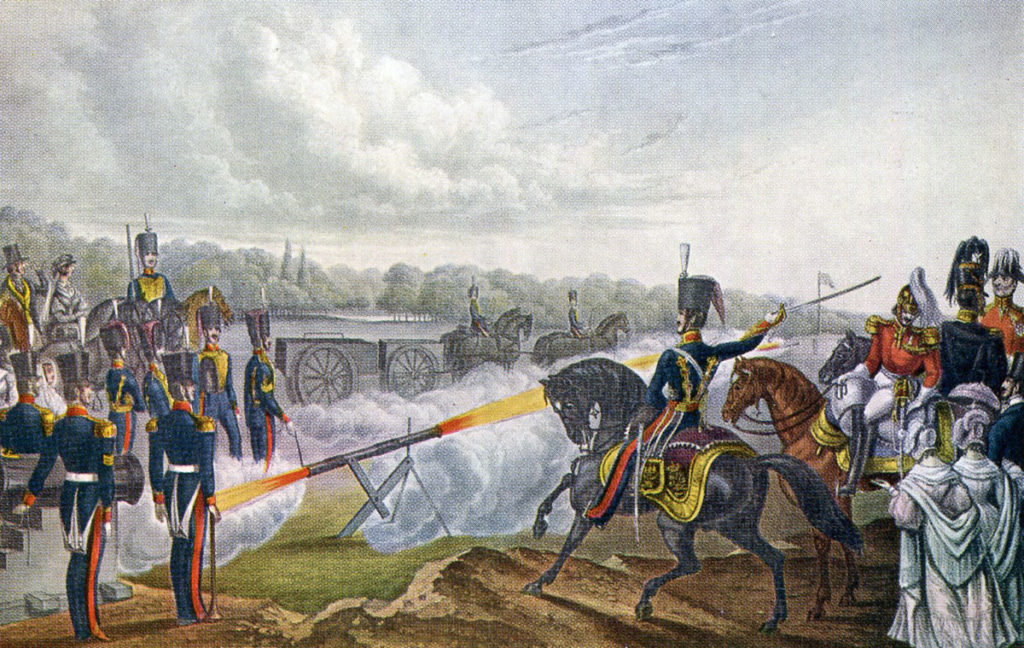
References for the Battle of Toulouse:
See the extensive list of references given at the end of the Peninsular War Index.
The previous battle of the Peninsular War is the Battle of Tarbes
The next battle of the Peninsular War is the Sortie from Bayonne
50. Podcast on the Battle of Toulouse fought on 10th April 1814 by Wellington against Marshal Soult outside the French City of Toulouse in Southern France; the last battle fought by Wellington in the Peninsular War: John Mackenzie’s britishbattles.com podcasts
